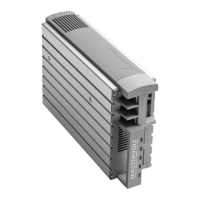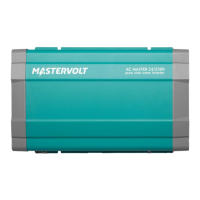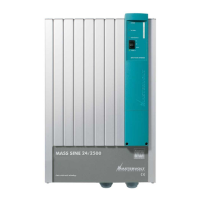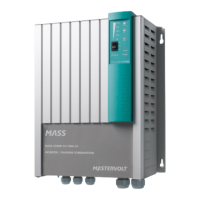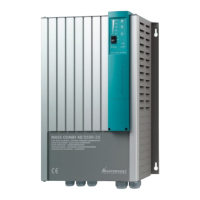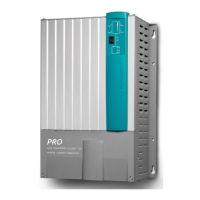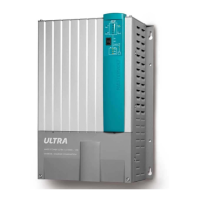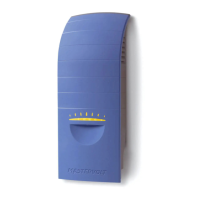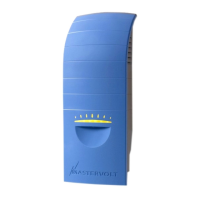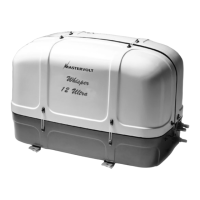MPPT Solar ChargeMaster 25 – User and Installation Manual
5 TROUBLE SHOOTING
If you cannot solve a problem with the aid of this chapter, contact your local Mastervolt Service Centre. See
www.mastervolt.com/technical-support. Make sure you have the following information present if you must contact your local
Mastervolt Service Center to solve a problem:
• Article and serial number; see section 2.7.
• Software version; see section 4.10.
No output voltage
and/or current
Solar ChargeMaster was switched off due
to a previous fault situation
Press POWER-button for one second to switch on
the Solar ChargeMaster again
Check section 3.6 for an overview of fault indications of the LEDs and the LCD display
Display shows
OVERLOAD or error
code E1, E2, E3, E4,
F0, F1 or F2
Check section 3.6 for an overview of fault indications of the LEDs and the LCD display
Fault indicator LED
illuminated
Check section 3.6 for an overview of fault indications of the LEDs and the LCD display
Press POWER switch for 1 second to mute the alarm. Check section 3.6 for an overview of fault
indications of the LEDs and the LCD display
The Solar ChargeMaster is in sleep mode
Press the POWER switch shortly to activate the
display
Output voltage too low,
charger supplies
maximum current
Load that is connected to the batteries is
larger than charger can supply.
Reduce load taken from the batteries.
Batteries not 100% charged
Measure battery voltage. After some time, this will
be higher.
Wrong battery type setting
Check settings (see section 4.8.2).
Batteries almost fully charged
Nothing, this is normal when the battery is almost
fully charged.
Nothing; if ambient temperature is above 40°C /
104°F the charge current is automatically reduced.
Low irradiation on the PV-array.
Check PV-array, check for shading.
Battery not fully
charged
Current to load is too high
Reduce load taken from the batteries.
Use an additional battery charger
Battery temperature too low
Use the battery temperature sensor.
Defective or worn-out battery
Check battery and replace if necessary.
Wrong battery type setting
Check settings (see section 4.8.2).
Battery is discharged
too fast
Battery capacity reduced due to sulphation
or due to plate corrosion
Charge and recharge a few times, this might help.
Check battery and replace if necessary.
Batteries are too warm,
gassing
Defective battery (short circuit in cell)
Check battery and replace if necessary.
Battery temperature too high
Use the battery temperature sensor.
Wrong battery type setting
Check settings (see section 4.8.2).
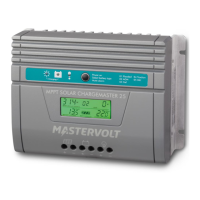
